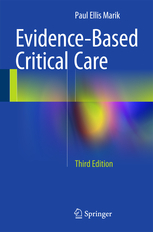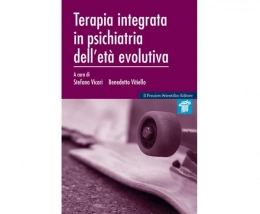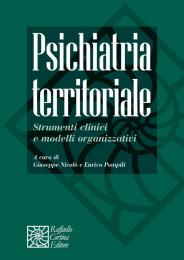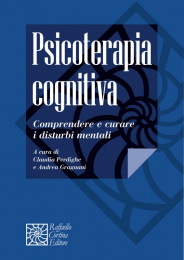Non ci sono recensioni
- The gold standard of critical care handbooks
- Streamlined and updated
- Exceptionally clear and easy to read
This is the premier evidence-based textbook in critical care medicine. The Third Edition features updated and revised chapters, numerous new references, streamlined content, and new chapters on key topics such as the new paradigm in critical care medicine, cardiac output monitoring, surgical optimization, vital signs, and arterial blood gas analysis. The book maintains the author’s trademark humor and engaging writing style and is suitable for a broad and diverse audience of medical students, residents, fellows, physicians, nurses, and respiratory therapists who seek the latest and best evidence in critical care.
From reviews of previous editions:
“This is an excellent introduction to the concept of evidence-based medicine...The writing is clear, logical, and highly organized, which makes for fast and enjoyable reading. I believe this book will get daily use in most intensive care units, by a wide range of readers.” –Respiratory Care
“This is one of the most comprehensive handbooks on critical care medicine with a strong emphasis on evidence base…Overall, this book should be useful for junior doctors or intensive care trainees who are starting their term in an intensive care unit.” –Anaesthesia and Intensive Care
Table of Contents
Part I General ICU Topics
1 Evidence Based Critical Care ................................................................ 3
References ................................................................................................. 6
2 “Less Is More”: The New Paradigm in Critical Care ......................... 7
References ................................................................................................. 8
3 “Classic” Papers ...................................................................................... 13
4 Critical Care Medicine 101 .................................................................... 19
Factors to Consider When a Patient is Admitted to the ICU ..................... 20
Initial “Generic” Treatment Orders ........................................................... 20
Reference .................................................................................................. 21
5 House Officers Guidelines 1: Housekeeping ......................................... 23
Admission History and Physical Examination ......................................... 23
Daily Examination .................................................................................... 24
General .................................................................................................. 24
Vital Signs (24 h Min and Max and Current) ....................................... 24
Additional Observations ....................................................................... 24
The Ventilator ........................................................................................ 25
Heart ...................................................................................................... 25
Chest ..................................................................................................... 25
Abdomen ............................................................................................... 25
CNS ....................................................................................................... 26
Importance of the Daily Neurological Examination ............................. 26
Laboratory Tests ........................................................................................ 26
Imaging ..................................................................................................... 27
Presenting on Daily Rounds ...................................................................... 27
New Admissions ................................................................................... 27
Follow Up Patients ................................................................................ 28
Clinical Pearls ........................................................................................... 28
References ................................................................................................. 28
6 House Officers Guidelines 2: Procedures ............................................. 29
Murphy’s Laws of Procedures .................................................................. 29
Central Venous Access .............................................................................. 30
Subclavian Vein Catheterization ........................................................... 31
Internal Jugular Vein Catheterization .................................................... 32
Femoral Vein Catheterization ................................................................ 33
Complications of Central Venous Access ............................................. 34
Arterial Catheters ...................................................................................... 34
Naso/Oro Gastric Tubes ............................................................................ 35
Feeding Tubes ........................................................................................... 36
Thoracentesis and Paracentesis ................................................................. 36
Clinical Pearls ....................................................................................... 37
References ................................................................................................. 37
7 Admission-Discharge Criteria ............................................................... 39
ICU Admission Criteria ............................................................................ 39
Prioritization of Potential ICU Admissions .............................................. 40
Priority 1 ............................................................................................... 40
Priority 2 ............................................................................................... 40
Priority 3 ............................................................................................... 40
Priority 4 ............................................................................................... 41
Transfer from Another Hospital: Variable Priority ............................... 41
Disease Specifi c Indications for ICU Admission ...................................... 41
Cardiovascular System .......................................................................... 41
Pulmonary System ................................................................................ 42
Neurological Disorders ......................................................................... 42
Drug Ingestion and Drug Overdose ...................................................... 42
Gastrointestinal Disorders ..................................................................... 43
Endocrine .............................................................................................. 43
Renal Disorders ..................................................................................... 43
Postoperative Care ................................................................................ 44
Miscellaneous ....................................................................................... 44
Physiologic Indication for ICU Admission ............................................... 44
Discharge Criteria ..................................................................................... 44
Reference .................................................................................................. 45
8 Chronic Critical Illness and the Long Term Sequela
of Critical Care ........................................................................................ 47
Neuromuscular Abnormalities .................................................................. 49
Critical Illness Polyneuropathy ............................................................. 49
Critical Illness Myopathy (See also Chap. 32 on Nutrition) ................. 49
Brain Dysfunction ................................................................................. 51
“Prevention” of CCI .................................................................................. 51
Management of CCI .................................................................................. 52
Testing ................................................................................................... 52
General Management ............................................................................ 53
Stress Hyperglycemia ........................................................................... 53
Metabolic Bone Disease ....................................................................... 53
Anabolic Steroids .................................................................................. 54
Exercise Program .................................................................................. 54
References ................................................................................................. 54
9 Fluid Responsiveness and Fluid Resuscitation ..................................... 57
Echocardiographic Assessment of Fluid Responsiveness ......................... 66
Static Echocardiographic Parameters.................................................... 66
Dynamic Echocardiographic Parameters .............................................. 66
Passive Leg Raising (PLR) ....................................................................... 67
The Fluid Challenge .................................................................................. 69
Fluid Boluses in Volume Responsive Patients .......................................... 71
What Type of Fluid? ................................................................................. 72
Lactated Ringer’s (Hartmann’s Solution) vs. 0.9 % NaCl
(Ab-Normal Saline) .............................................................................. 72
Complications Associated with 0.9 % NaCl vs. Lactate
Ringers Solution........................................................................................ 73
Renal Failure ......................................................................................... 73
Hyperchloremic Metabolic Acidosis and DEATH ................................ 73
Lactate Generates HCO3
− ....................................................................... 73
Ringer’s Lactate and Kidney Disease ................................................... 74
Ringers Lactate and Liver Disease ........................................................ 75
Coagulopathy ........................................................................................ 75
Lactate as a Metabolic Fuel .................................................................. 75
Albumin .................................................................................................... 76
Hetastarches (HES) ................................................................................... 77
So, Which Fluid? ....................................................................................... 78
Resuscitation in Specifi c Disease States ................................................... 78
Hemorrhage ........................................................................................... 78
Traumatic Brain Injury .......................................................................... 79
Dehydration ........................................................................................... 79
Sepsis (and SIRS) ................................................................................. 80
Burns ..................................................................................................... 80
Management of Oliguria ........................................................................... 80
Management of Volume Overload/Acute Pulmonary Edema ............... 81
References ................................................................................................. 81
10 Assessment of Cardiac Function and Cardiac Output ........................ 89
Echocardiographic Assessment of Cardiac Function ................................ 89
Methods of Measuring Cardiac Output ..................................................... 90
Pulmonary Artery Catheter ................................................................... 90
Transpulmonary Thermodilution .......................................................... 91
Pulse Contour Analysis ......................................................................... 92
Esophageal Doppler .............................................................................. 93
USCOM ................................................................................................ 93
Bioreactance .......................................................................................... 94
Utility of Cardiac Output monitoring ....................................................... 94
Determining Fluid and Inotrope Responsiveness ................................. 94
Driving up CI to Supranormal Values ................................................... 94
References ................................................................................................. 95
11 Peri-operative Fluid Optimization ........................................................ 99
References ................................................................................................. 104
12 Sepsis ........................................................................................................ 107
Bacteriology and Sites of Infection ........................................................... 108
Pathophysiology of Sepsis ........................................................................ 109
Septic “Cardiomyopathy” ..................................................................... 109
Complications Associated with Sepsis.................................................. 111
Clinical Features and Diagnosis of Sepsis ................................................ 112
Organ Dysfunction in Severe Sepsis/Septic Shock ............................... 112
Management of Sepsis .............................................................................. 115
Antibiotic Therapy ................................................................................ 118
Fluid Therapy (See also Chap. 9) .......................................................... 119
Vasopressors and Inotropic Agents ....................................................... 124
B-Blockers and Phenylephrine in Septic Shock ................................... 128
Resuscitation End-Points ...................................................................... 129
The Dangers of a HIGH CVP ............................................................... 130
Does Tissue Hypoxia and Mitochondrial Dysfunction
Exist in Sepsis? ..................................................................................... 133
Case Example ............................................................................................ 136
References ................................................................................................. 137
13 The Stress Response, Stress Hyperglycemia
and Stress Hyperlactemia .......................................................................... 149
The Stress Response ................................................................................. 149
Cardiovascular Effects of the Stress Response ..................................... 152
Immune Effects of the Stress Response ................................................ 152
Metabolic Effects of the Stress Response ............................................. 153
Stress Hyperglycemia ............................................................................... 153
Treatment of “Stress Hyperglycemia” .................................................. 155
So What to Do! ..................................................................................... 157
How to Achieve These Goals? .............................................................. 157
Glucose Control and Steroids ............................................................... 158
Stress Hyperlactemia ................................................................................ 158
Lactate Metabolism ............................................................................... 159
Lactate as a Marker of Illness Severity ................................................. 160
Lactate as a Marker of Metabolic Stress ............................................... 161
Lactate as a Metabolic Fuel .................................................................. 162
Heart Metabolism and Lactate .............................................................. 163
Brain Metabolism and Lactate .............................................................. 163
References ................................................................................................. 164
14 Understanding the Vital Signs: BP, HR, RR, TEMP,
SaO2 … and SV ....................................................................................... 169
Blood Pressure .......................................................................................... 169
The Brain-Heart Distance and the Giraffe Theory of Blood Pressure
Determination in Humans ..................................................................... 170
What’s a Normal Blood Pressure? ........................................................ 171
BP Thresholds for the Intensivist/Anesthesiologist .............................. 172
Non-Invasive Blood Pressure (NIBP) vs Arterial Line Blood Pressure
(IAP) and Systolic Blood Pressure (SBP) vs Mean Arterial
Pressure (MAP) ..................................................................................... 172
Central vs Peripheral Blood Pressure Measurement ............................. 173
Blood Pressure Autoregulation ............................................................. 174
MAP, Organ Failure and Death ............................................................. 175
Circulatory Shock ..................................................................................... 176
Pulse Rate .................................................................................................. 177
Respiratory Rate (& Pattern) .................................................................... 178
Temperature .............................................................................................. 179
Pulse Oximetry .......................................................................................... 179
Too Much Oxygen Kills ............................................................................ 184
Analysis of the Oximetric Waveform .................................................... 188
Stroke Volume: The 6th Vital Sign ............................................................ 189
Putting the Vital Signs Together ................................................................ 190
Early Warning Scoring Systems and Rapid Response Teams ............... 191
References ................................................................................................. 192
15 Management of Pain, Agitation and Delirium ..................................... 197
Assessing the Level of Pain and Sedation ................................................. 200
The Ramsey Sedation Scale .................................................................. 201
The Richmond Agitation-Sedation Scale (RASS) ................................ 201
Sedation Vacations .................................................................................... 202
Non-pharmacologic Interventions............................................................. 202
Delirium .................................................................................................... 202
Sedative and Analgesics Agents ................................................................ 205
Lorazepam ............................................................................................. 205
Midazolam ............................................................................................ 206
Propofol ................................................................................................. 206
Dexmedetomidine ................................................................................. 207
Haloperidol ........................................................................................... 208
Fentanyl ................................................................................................. 208
Morphine ............................................................................................... 208
Meperidine ............................................................................................ 208
Neuromuscular Blockade .......................................................................... 209
Neuromuscular Blocking Agents .......................................................... 209
References ................................................................................................. 210
16 Hospital Acquired Infections and Their Prevention ............................ 213
Colonization with Multidrug Resistant Organisms ................................... 215
Handwashing and Infection Control Measures ......................................... 216
Handwashing ......................................................................................... 216
Chlorhexidine Bathing .......................................................................... 216
Gloves and Gowns and Healthcare Provider Apparel ........................... 217
Universal Screening for MDR’s and “Protective Isolation” ................. 217
Oropharyngeal and Gastrointestinal Decolonization ............................ 218
Private Rooms and Environmental Control .......................................... 219
Central Line Associated Blood Stream Infection ...................................... 220
Management of CLABSI’s ................................................................... 224
Antibiotics Lock Therapy ..................................................................... 225
Prevention of CLABSI .......................................................................... 225
Catheter Associated Urinary Tract Infection ............................................. 227
Ventilator Associated Pneumonia ............................................................. 229
Pathogenesis of VAP ............................................................................. 230
Diagnosis of VAP .................................................................................. 232
Treatment .............................................................................................. 234
General Concepts for the Antimicrobial Treatment of VAP ................. 234
Empiric Antibiotic Choices ................................................................... 235
“Specifi c” Interventions for Prevention of VAP .................................... 235
Clostridium diffi cile Infection ............................................................... 239
Laboratory Diagnosis ............................................................................ 241
Sigmoidoscopy ...................................................................................... 242
Treatment .............................................................................................. 243
Fidaxomicin .......................................................................................... 244
Adjunctive Treatment Options .............................................................. 244
Probiotics .............................................................................................. 245
Surgical Intervention ............................................................................. 245
Nosocomial Rhinosinusitus ...................................................................... 246
References ................................................................................................. 248
Part II Pulmonary
17 The Bacterial Pneumonias: A New Treatment Paradigm ................... 261
Unifi ed Treatment Algorithm .................................................................... 263
No Risk Factors for a CAP-DRP .......................................................... 263
Risk Factors for CAP-DRPs ................................................................. 264
Infl uenza (Co-Existent or Infl uenza Pneumonia) .................................. 264
Diagnostic Testing of Hospitalized Patients with Pneumonia .............. 265
Non-Infectious Diseases Masquerading as Pneumonia ........................ 265
Special Considerations .............................................................................. 266
Severe CAP with no MDR Risk Factors ............................................... 266
Community-Acquired MRSA Pneumonia (CA-MRSA) ...................... 266
Aspiration Pneumonia ........................................................................... 267
Nursing Home-Acquired Pneumonia .................................................... 269
Persistent Temperature/Failure to Respond to Rx ................................. 269
Unusual Pathogens ................................................................................ 270
Complicated Pleural Effusion/Empyema .............................................. 271
References ................................................................................................. 271
18 Fever ......................................................................................................... 275
Common Misconception and Fables ......................................................... 275
Pathogenesis of Fever ............................................................................... 276
Treatment of Fever ................................................................................ 276
Causes of Fever in the ICU ....................................................................... 278
Infectious Causes of Fever in the ICU .................................................. 279
Non-Infections Causes of Fever in the ICU .......................................... 279
Non-Infectious Causes of Fever ............................................................ 279
An Approach to the Febrile ICU Patient ................................................... 286
Clinical Pearls ........................................................................................... 288
References ................................................................................................. 288
19 Mechanical Ventilation 101 .................................................................... 291
Alveolar Overdistension Damages Normal Lungs ................................... 293
Ventilator Variables and Modes of Ventilation .......................................... 293
Ventilator Variables (See Table 19.1) .................................................... 297
Common Modes of Mechanical Ventilation ............................................. 299
Positive End-Expiratory Pressure (PEEP) ............................................ 303
Auto-PEEP ................................................................................................ 305
Monitoring Patients Undergoing Mechanical Ventilation ..................... 306
Sudden Increase in Airway Pressure and/or Fall
in Arterial Saturation ............................................................................. 307
When to Perform a Tracheostomy ............................................................ 307
Timing of Tracheostomy in the Critically Ill ........................................ 308
References ................................................................................................. 308
20 Non-invasive Ventilation ......................................................................... 311
Set Up ........................................................................................................ 312
Initial Settings ........................................................................................... 312
Indications of NIV .................................................................................... 313
COPD Exacerbations ............................................................................ 313
Acute Cardiogenic Pulmonary Edema .................................................. 313
Facilitating Extubation in COPD Patients ............................................ 313
Immunocompromised Patients .............................................................. 314
Post-operative Patients .......................................................................... 314
When to Use NIV ...................................................................................... 315
Hypercapnic Respiratory Failure .......................................................... 315
Hypoxemic Respiratory Failure ............................................................ 315
Contraindications to NIPPV ................................................................. 315
Success and Failure Criteria for NIPPV ............................................... 316
References ................................................................................................. 316
21 Liberation (Weaning from Mechanical Ventilation) ............................ 319
General Concepts ...................................................................................... 319
Effect of Liberation on Oxygen Consumption and Cardiac Function .. 320
Fluid Overload and Liberation Failure .................................................. 320
Vasopressors and Inotropic Agents and Weaning ................................. 321
Mechanical Ventilation Liberation Process .............................................. 322
“Readiness” Testing .............................................................................. 322
Spontaneous Breathing Trials ............................................................... 323
Causes of Liberation Failure ................................................................. 324
Early Extubation Followed by NIV in COPD ...................................... 324
NIV for Persistent Liberation Failure ................................................... 324
Extubation Failure ................................................................................. 325
Patients at High Risk of Extubation Failure .......................................... 325
The Cuff Leak Test .................................................................................... 326
Corticosteroids for the Prevention of Post-extubation Stridor .............. 326
References ................................................................................................. 326
22 Arterial Blood Gas Analysis ................................................................... 329
Indications for ABG Sampling .................................................................. 329
ABG Sampling .......................................................................................... 330
ABG Analysis ........................................................................................... 331
Alveolar Ventilation .............................................................................. 332
Oxygenation .......................................................................................... 332
Acid-Base Balance ................................................................................ 334
A Step Wise Approach to Acid-Base Disorders ........................................ 335
Common Acid Base Disturbances in the ICU ........................................... 338
Metabolic Acidosis ................................................................................ 338
Metabolic Alkalosis .............................................................................. 341
Venous Blood Gas Analysis (VBGs) ........................................................ 342
Mixed Venous/Central Venous Oxygen Saturation ................................... 343
References ................................................................................................. 344
23 ARDS ........................................................................................................ 349
Defi nition, Causes and Assessment of Severity ........................................ 349
Defi nition of ALI According the American European Consensus ........ 349
Acute Lung Injury (ALI) ...................................................................... 349
Acute Respiratory Distress Syndrome (ARDS) .................................... 350
Pathophysiological Defi nition of ARDS ............................................... 350
Causes of ALI ....................................................................................... 351
Management of the Acute Phase of ARDS ............................................... 351
Ventilatory Strategy .............................................................................. 352
Pressure Controlled Ventilation............................................................. 355
Airway Pressure Release Ventilation .................................................... 357
Permissive Hypercapnia ........................................................................ 359
Best PEEP ............................................................................................. 359
Recruitment Maneuvers ........................................................................ 361
Non-Ventilatory Adjuncts to Gas Exchange ............................................. 361
Prone Positioning .................................................................................. 361
Neuromuscular Blocking Agents .......................................................... 362
ECMO ....................................................................................................... 362
Corticosteroids ...................................................................................... 363
Inhaled Nitric Oxide ............................................................................. 365
Nebulized Prostacyclin ......................................................................... 365
β2-Adrenergic Receptor Agonists .......................................................... 365
Surfactant .............................................................................................. 365
Omega-3 Enteral Nutrition.................................................................... 366
“Our” Approach to Refractory Hypoxemia .............................................. 366
References ................................................................................................. 367
24 COPD Exacerbation ............................................................................... 373
Common Precipitating Events .................................................................. 374
Indications for Hospitalization .................................................................. 375
Indications for ICU Admission ................................................................. 375
Treatment .................................................................................................. 375
Indications for NPPV ................................................................................ 377
Indications for Endotracheal Intubation .................................................... 377
Mechanical Ventilation in COPD .............................................................. 377
Suggested Initial Settings .......................................................................... 378
References ................................................................................................. 378
25 Acute Severe Asthma .............................................................................. 381
Indications for Admission to the ICU ....................................................... 382
Initial Treatment ........................................................................................ 382
Other Therapeutic Options .................................................................... 383
Complications of Acute Asthma ............................................................... 384
Noninvasive Positive-Pressure Ventilation in Status Asthmaticus ............ 384
Indications for Intubation .......................................................................... 385
Sedation Post-intubation ........................................................................... 386
Mechanical Ventilation.............................................................................. 386
Initial Ventilator Settings........................................................................... 387
References ................................................................................................. 388
26 Pleural Effusions and Atelectasis .......................................................... 391
Pleural Effusions ....................................................................................... 391
Pathophysiology .................................................................................... 391
Drainage of Pleural Effusion ................................................................. 392
Hepatic Hydrothorax ................................................................................. 393
Alelectasis ................................................................................................. 393
Respiratory Therapy .............................................................................. 394
Mucolytics ............................................................................................. 394
Bronchoscopy ....................................................................................... 395
Bilevel/APRV ........................................................................................ 395
References ................................................................................................. 396
27 Venous Thromboembolic Disease: DVT and PE .................................. 399
Pregnancy, Venous Thromboembolism and Thrombophilias .................... 399
Site of Venous Thrombosis ....................................................................... 400
The Veins of the Lower Limb ............................................................... 401
Suggested DVT Prophylaxis Protocols ..................................................... 405
Diagnosis of DVT ..................................................................................... 405
Distal Lower Extremity DVT .................................................................... 406
Upper Extremity DVT .............................................................................. 406
Superfi cial Phlebitis .............................................................................. 407
Pulmonary Embolism................................................................................ 408
Diagnosis of Pulmonary Embolism ...................................................... 408
Treatment of Thromboembolic Disease ................................................ 411
Thrombolytic Therapy .......................................................................... 413
Catheter Directed Clot Fragmentation and Aspiration .......................... 418
Inhaled Nitric Oxide ............................................................................. 418
Vena Caval Interruption ........................................................................ 419
“Absolute Contraindications” for Anticoagulation with Heparin ......... 419
References ................................................................................................. 419
Part III Cardiac
28 Hypertensive Crises ................................................................................ 429
Defi nitions ................................................................................................. 429
Pathophysiology ........................................................................................ 430
Clinical Presentation ................................................................................. 431
Initial Evaluation ................................................................................... 432
Initial Management of Blood Pressure ..................................................... 433
Resident (or Hospitalist) Called to the Floor for High
Blood Pressure: What to Do? ................................................................ 434
Drugs to AVOID .................................................................................... 436
Recommended Antihypertensive Agents .............................................. 437
Acute Postoperative Hypertension ........................................................ 439
Pre-operative Hypertension ................................................................... 440
Posterior Reversible Encephalopathy Syndrome (PRES) ......................... 441
Pregnancy-Induced PRES ..................................................................... 441
Drugs Associated with PRES ................................................................ 442
References ................................................................................................. 442
29 Acute Decompensated Cardiac Failure ................................................. 445
Confi rm the Diagnosis of Cardiac Failure ................................................ 446
Evaluation of the Patient with Cardiac Failure ......................................... 447
B-Type Natriuretic Peptides .................................................................. 447
Echocardiography ................................................................................. 448
Laboratory Testing ................................................................................ 448
Hemodynamic Monitoring .................................................................... 448
Precipitating Factors ............................................................................. 449
Treatment .................................................................................................. 449
Acute Phase of Treatment ..................................................................... 449
Treatment of ADHF: Summary ............................................................. 456
Long-Term Management .......................................................................... 456
Systolic Heart Failure ........................................................................... 457
Management of Patients with Heart Failure with Preserved Ejection
Fraction (HFpEF) .................................................................................. 461
Takotsubo Cardiomyopathy ...................................................................... 462
Stressors Reported to Trigger Takotsubo
Cardiomyopathy .................................................................................... 462
Mayo Clinic Criteria for Takotsubo Cardiomyopathy .......................... 464
References ................................................................................................. 465
30 Acute Coronary Syndromes ................................................................... 471
Unstable Angina/NSTEMI ........................................................................ 471
Canadian Cardiovascular Classifi cation of Angina ................................... 472
Types of Presentations of Unstable Angina .............................................. 472
Differential Diagnosis ............................................................................... 472
Electrocardiography .................................................................................. 472
Tropinins ................................................................................................... 473
Management of UA/NSTEMI ................................................................... 473
Risk Stratifi cation.................................................................................. 473
Thrombolysis in Myocardial Infarction
(TIMI) Risk Score ................................................................................. 473
Global Registry of Acute Coronary Events (GRACE)
Risk Model .................................................................................................... 474
Treatment Approach for UA and NSTEMI
(PER AHA Guidelines) ................................................................................. 474
Class I Recommendations ..................................................................... 474
Class II Recommendations ................................................................... 475
Treatment Approach to STEMI (PER AHA Guidelines) .......................... 475
Class I Recommendations ..................................................................... 475
Class II Recommendations ................................................................... 476
Complications Following STEMI ............................................................. 477
Recurrent Chest Pain Post-AMI ............................................................ 477
Mitral Regurgitation .............................................................................. 477
Left Ventricular Failure and Low Output States ................................... 478
Right Ventricular Infarction .................................................................. 478
Atrial Fibrillation .................................................................................. 478
References ................................................................................................. 479
31 Arrhythmias ............................................................................................ 481
Arrhythmias and Electrolyte Disturbances ............................................... 481
Acute Atrial Fibrillation/Flutter ................................................................ 482
Urgent Cardioversion ............................................................................ 483
Rate Control .......................................................................................... 483
Pharmacologic Cardioversion ............................................................... 484
Anticoagulation ..................................................................................... 484
Multifocal Atrial Tachycardia (MAT) ....................................................... 485
Paroxysmal Supraventricular Tachycardia (PSVT) .................................. 485
Management .......................................................................................... 486
SVT Mediated by Accessory Pathways ................................................ 486
Sinus Bradycardia ..................................................................................... 487
Sick-Sinus Syndrome ................................................................................ 487
Accelerated Idioventricular Rhythm ......................................................... 487
Ventricular Premature Complexes and Bigeminy ..................................... 487
Nonsustained Ventricular Tachycardia ...................................................... 488
Sustained Ventricular Tachycardia ............................................................ 488
Polymorphic Ventricular Tachycardia (Torsades De Pointes) ................... 489
Management .......................................................................................... 489
References ................................................................................................. 490
Part IV Gastrointestinal
32 Nutrition in the ICU: It’s Whey Cool .................................................... 493
Myths of Nutritional Support .................................................................... 494
Important Points to Digest ........................................................................ 495
How Many Calories and How Much Protein to Give? ............................. 498
Muscle Wasting in Critical Illness ........................................................ 499
Factors That Activate Muscle Synthesis by the mTOR Pathway .......... 502
Bolus vs. Continuous Feeding .............................................................. 504
So! What is the Best Way to Feed Critically Ill Patients? ......................... 506
The Obese Patient ..................................................................................... 507
The Refeeding Syndrome ......................................................................... 507
References ................................................................................................. 508
33 Stress Ulcer Prophylaxis ......................................................................... 513
Does SUP Reduce GI Bleeding? ............................................................... 514
Enteral Nutrition and Stress-ulcer Prophylaxis ......................................... 515
Complications Associated with Acid Suppressive Therapy ...................... 516
So! What to Do? ........................................................................................ 517
Complications Associated with Specifi c Drugs ........................................ 517
H2 Receptor Antagonists (H2RA) ........................................................ 517
Proton Pump Inhibitors (PPIs) .............................................................. 518
Sucralfate .............................................................................................. 518
References ................................................................................................. 519
34 Acute and Chronic Liver Disease .......................................................... 523
Chronic Liver Failure ................................................................................ 523
Causes of Cirrhosis ............................................................................... 524
Metabolic/Hematologic Derangements in Cirrhosis ............................. 525
Spontaneous Bacterial Peritonitis ............................................................. 525
Hepatic Encephalopathy ........................................................................... 527
Grades of Hepatic Encephalopathy ....................................................... 528
Hepatorenal Syndrome .............................................................................. 529
Hepatorenal Syndrome: Diagnostic Criteria ......................................... 530
Diagnostic Approach ............................................................................. 530
Treatment of HRS ................................................................................. 531
Hepato-adrenal Syndrome ........................................................................ 532
Pulmonary Consequences of Portal Hypertension .................................... 532
Infection and Cirrhosis .............................................................................. 532
Supportive Care of the Hospitalized Cirrhotic ...................................... 533
The Coagulopathy of Chronic Liver Disease ............................................ 534
Portal Vein Thrombosis ............................................................................. 535
Acute-on-chronic Liver Failure ................................................................. 537
Alcoholic Hepatitis ................................................................................... 538
Differential Diagnosis ........................................................................... 539
Management .......................................................................................... 539
Fulminant Hepatic Failure ........................................................................ 540
Causes of Fulminant Hepatic Failure .................................................... 541
Workup of Patients Presenting with FHF ............................................. 541
Cerebral Edema in FHF ........................................................................ 542
Management of Increased ICP .............................................................. 543
Supportive Measures ............................................................................. 545
Indications for Liver Transplantation .................................................... 545
Kings Criteria ........................................................................................ 546
References ................................................................................................. 546
35 GI Bleeding .............................................................................................. 551
Initial Assessment ..................................................................................... 551
Initial Resuscitation .................................................................................. 553
Triage of Patients. Who to Admit to the ICU? .......................................... 555
Upper GI Bleeding .................................................................................... 555
The Major Causes of UGIB Include ..................................................... 556
Further Management of Upper GI Bleeding (See Fig. 35.1) .................... 556
Further Management of Bleeding Peptic Ulcers ....................................... 557
Recurrent Hemorrhage .......................................................................... 559
Further Management of Esophageal Varices............................................. 559
Management of Patients with Lower GI Bleeding .................................... 560
References ................................................................................................. 562
36 Pancreatitis .............................................................................................. 565
Diagnosis ................................................................................................... 566
Risk Stratifi cation...................................................................................... 567
Complications ........................................................................................... 568
Management .............................................................................................. 569
References ................................................................................................. 571
37 Diarrhea & Constipation ........................................................................ 575
Diarrhea ..................................................................................................... 575
Infectious Diarrhea .................................................................................... 575
“Non-Infectious” Diarrhea ........................................................................ 576
Antibiotic Associated Diarrhea (AAD) ................................................. 576
Enteral Feeding-Associated Diarrhoea ................................................. 576
Management of “Non-Infectious” Diarrhoea ........................................ 576
The Use of Probiotics and Prebiotics ........................................................ 577
Constipation .............................................................................................. 579
References ................................................................................................. 580
Part V Miscellaneous
38 Transfusion of Blood and Blood Products ............................................ 585
Red Blood Cell Transfusions .................................................................... 585
Why Transfuse? .................................................................................... 586
Risks Associated with Blood Transfusion (See Fig. 38.1) ........................ 586
Risks Associated with Blood Transfusion............................................. 587
Transfusion-Associated Immunomodulation ........................................ 588
“Age” of Transfused Red Blood Cells .................................................. 590
Tolerance to Anemia ............................................................................. 596
Weighing the Risks and Benefi ts of Blood Transfusion ....................... 596
So, When Should Patients’ Be Transfused? .......................................... 597
Coagulation Disorders in the ICU ............................................................. 598
Fresh Frozen Plasma ................................................................................. 600
FFP Prior to Invasive Bedside Procedures or Surgery .......................... 601
Paracentesis ........................................................................................... 604
Management of Non-therapeutic INRs With or Without Bleeding
(Due to Coumadin Therapy) ................................................................. 604
Platelet Transfusion ................................................................................... 606
Heparin Associated Thrombocytopenia .................................................... 610
Thrombotic Thrombocytopenic Purpura (TTP) ........................................ 612
Cryprecipitate ............................................................................................ 614
References ................................................................................................. 614
39 Adrenal Insufficiency .............................................................................




